We spent a little extra time on mixtures in our Science Lab theme, so we could experiment with dissolving salt in water. Science in preschool can be so simple and yet so fun and educational. Science activities for young children can be simple. Remember, this is all new to them!

Dissolving Salt in Water
Just bring out a tray of interesting materials and children are excited to get busy. Our tray includes plastic beakers of water, regular table salt, and containers of coarse salt. Each child also used a small plastic cup or beaker, spoon, and pipette for this experiment. This is a great activity to do outdoors. Just be sure to dump the water out in an area where there’s no plants or grass as salt and water may kill grass and foilage.
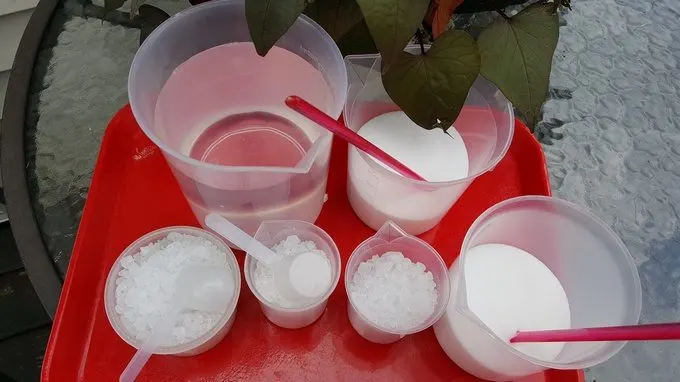
First, we talked about salt being a solid. We’ve already learned that sometimes solids can change into a liquid or vice versa. Everyone spoon some salt into their container.
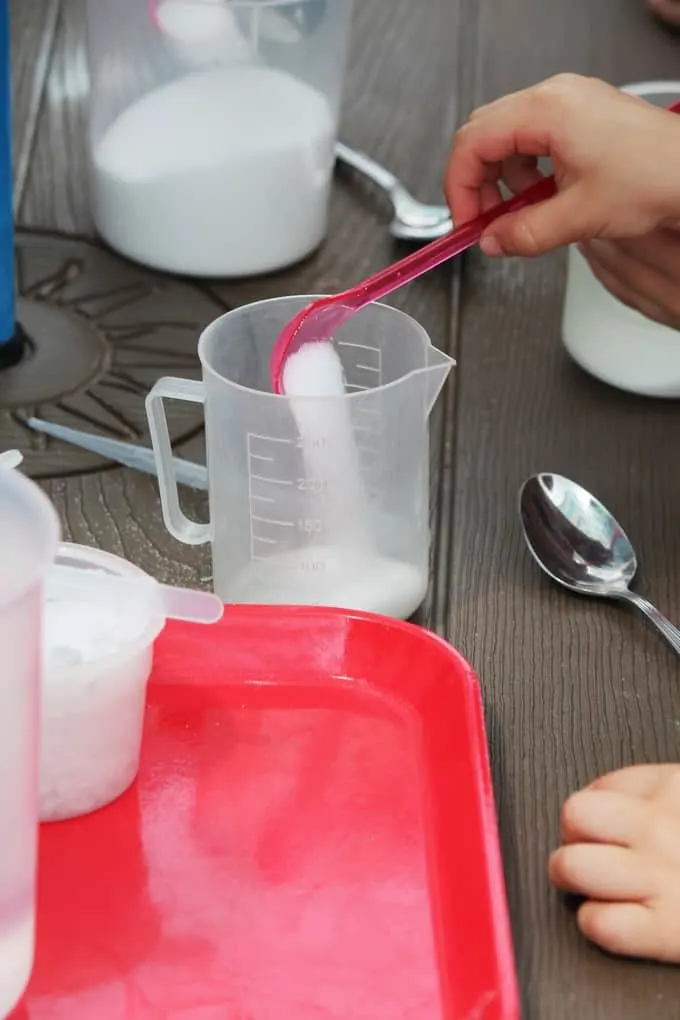
Then using pipettes, we started adding water. We could have poured water into our containers but using pipettes slows down the process.
Why slow down the process?
1. it’s not over so quickly and…
2. it’s easier to observe what’s happening when smaller amounts of water are added at a time.
3. Let’s not forget that pipettes are science tools and using science tools is important when learning about science. Plus use of them incorporates exercise of the small hand muscles.
See, there’s a method to my madness.
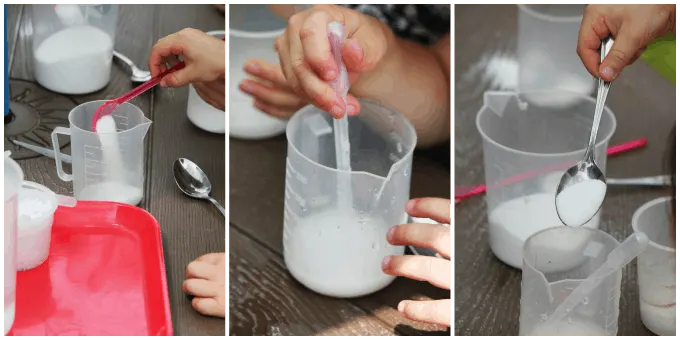
What happens when you add water to the salt? The answer was: “It gets darker.” Right, we do see that the salt that is absorbing water starts to look darker than the dry salt. The use of a new work “absorbing” is important. Then I can also ask
The answer was: “It gets darker.” Right, we do see that the salt that is absorbing water starts to look darker than the dry salt. The use of a new work “absorbing” is important. Then I can also ask, “What does absorbing mean?” The salt is soaking up the water because it is dry.
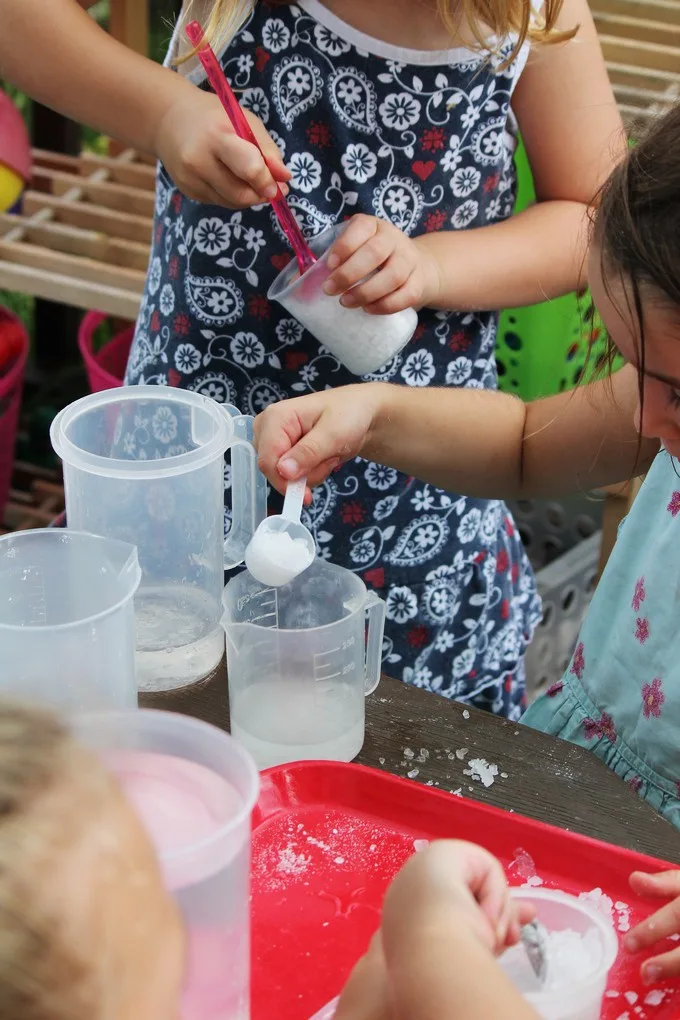
What happens when you add more water? The salt starts to “melt”. That’s what we call dissolve. Stir your cups. Can you feel the salt in your cup? Keep stirring! Add more water! Can you feel the salt in the water now? What if you add A LOT of salt? Then it may or may not fully dissolve. How has the water changed?
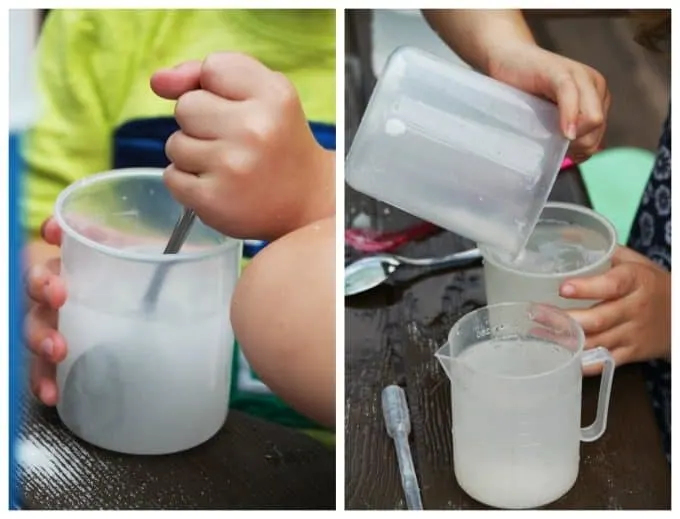
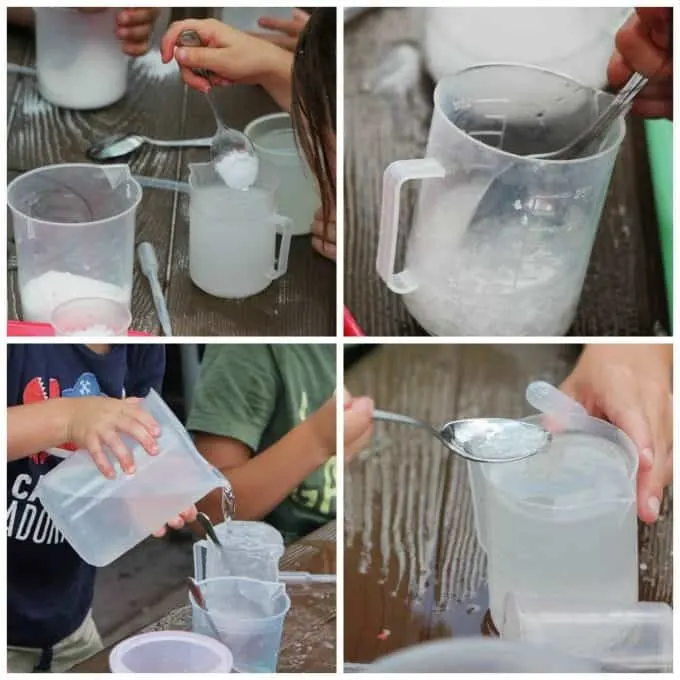
Now let’s try this with the coarse salt. “It looks like crystals!” How does it dissolve differently from the fine salt?
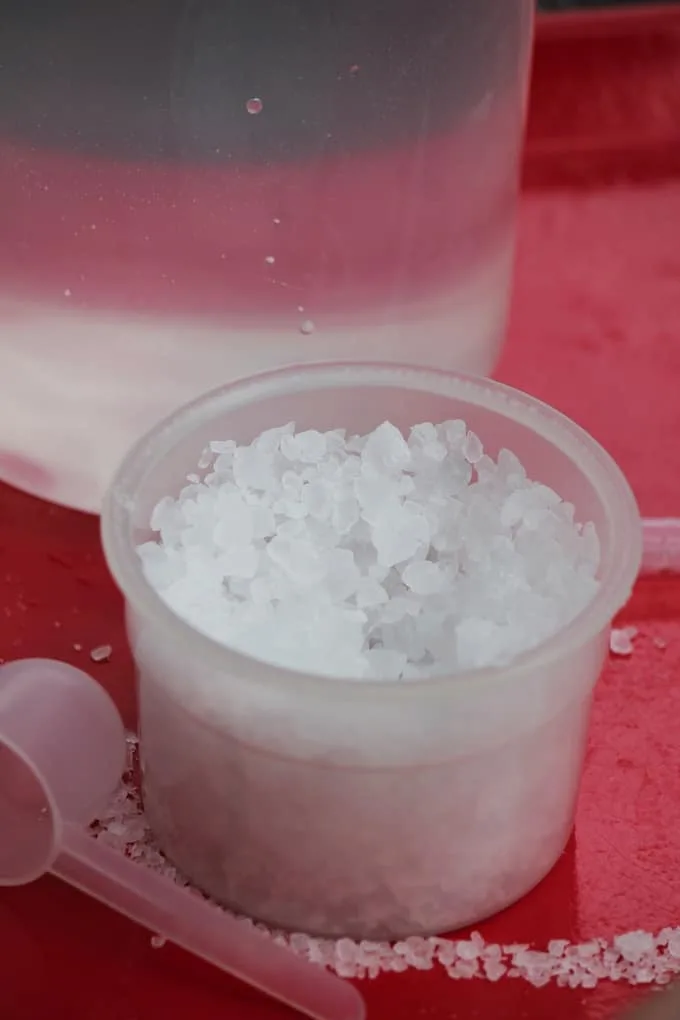
It takes more water and more stirring! What about using warm water vs. cool water? 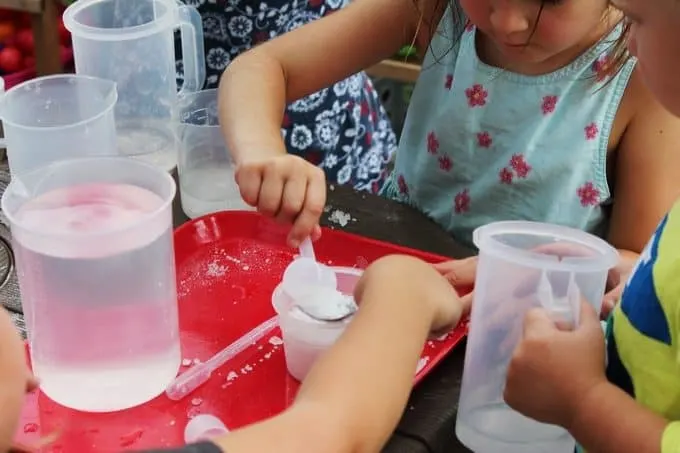
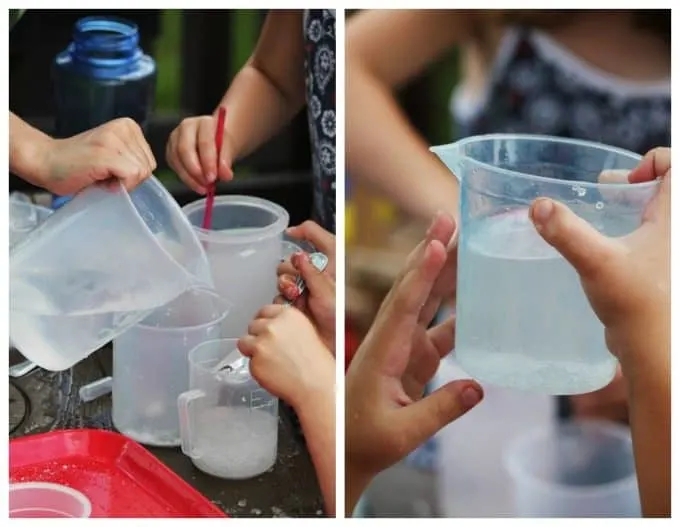
Dissolving Salt in Water was super fun and engaging. You can try dissolving a variety of solids, like sugar, coffee, sprinkles, flour and more.
Materials We Used

Light and Electricity
Friday 26th of August 2016
[…] Dissolving Salt in Water […]